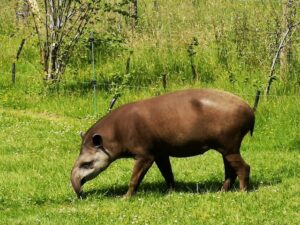Belize offers travelers who prioritize sustainable travel many rewards; yet it remains a developing nation, creating unique challenges to conservation efforts.
Even the best environmental laws can only go so far without sufficient funding to designate protected areas, define boundaries, hire wildlife managers, and hire inspectors on-site. That is why partnerships between public entities and private entities in Belize are vitally important.
National Parks
Belize, an island nation the size of New Jersey, boasts abundant vegetation and fauna that is unique to this part of the world. Belizeans are committed to maintaining this rich environment as part of ecotourism ventures.
National parks and wildlife sanctuaries throughout the nation offer nature lovers an incredible range of activities – hiking, bird-watching, swimming, canoeing, or simply appreciating these peaceful spaces – including hiking, bird-watching, canoeing or simply watching birds and wildlife. Many parks require only minimal entrance fees that go directly back into maintaining them, thus helping ensure these aren’t overcrowded like some tropical tourist spots.
However, the government recognizes its limitations in protecting its natural treasures on its own; therefore, it works with private companies and indigenous Maya and Garifuna communities to manage parks and protected areas more efficiently and share their culture and traditional ways of life which are inextricably linked with nature.
Belize has taken great strides toward sustainable tourism, leading many of those living along its coasts to develop ecotourism businesses of their own. Their experience shows them how the revenue generated from visitors benefits local economies while simultaneously protecting Belize’s unique natural and cultural heritage.
One such national monument is Half Moon Caye National Monument, established in March 1982 near Lighthouse Reef at its southeast corner. This land and marine preserve contain both tropical forests and an unpolluted marine environment – providing shelter to many types of birds as well as two intact Mayan Temple Mounds that remain unexcavated.
Conservation efforts focus largely on Belize’s coastal waters. Citing concerns over unchecked coastal development, overfishing, and offshore oil concessions as the drivers behind Belize Barrier Reef Reserve System’s listing on the World Heritage in Danger list in 2009 was enough to spur a national effort alongside The Nature Conservancy and other NGOs to restructure national debt for marine conservation purposes and develop management frameworks for domestic, high-seas fisheries and coastal blue carbon projects.
Wildlife Sanctuaries
Belize’s lush rainforests stretch along azure waters, while vibrant coral reefs teem with life. Over 40% of Belize’s land and marine areas have been dedicated to conservation and ecotourism – serving as an example to other nations of how tourism and preservation go hand in hand.
Belize is home to numerous wildlife sanctuaries that draw birders. From jungle trails to Caribbean shorelines, its bird species are prolific and diverse – an unrivaled birding destination in Central America.
Are You Hunting a Scarlet Macaw in Belize or Are You in Search of an Elusive Jabiru Stork? Well, look no further – Belize’s wetlands and forests boast more than 600 bird species! Particularly abundant are tropical waders such as herons and egrets as well as several types of owls!
Bird-watching tours can be found throughout Belize’s parks and wildlife sanctuaries, but for the best chance at viewing wildlife in its natural environments, one of its many inland lagoons or wetlands would be your best bet. Belizean wetlands provide essential breeding grounds for West Indian manatees – Gales Point’s lagoons being among the world’s premier manatee-spotting destinations.
Waterways like these pristine bodies of water provide habitat to numerous bird, fish, reptile, and mammal species protected by strict laws that forbid logging or other destructive activities. Wetlands serve an invaluable carbon storage function by absorbing atmospheric carbon emissions into their systems to mitigate climate risk.
Belize has initiated numerous community-led wildlife conservation efforts. One such effort is the Hol Chan Marine Reserve, created as part of an effort by local fishermen to revive depleted fishing stocks within its waters. Other initiatives include Community Baboon Sanctuary and The Belize Zoo run by Belizeans respectively as well as the Green Iguana Conservation Project which seeks to safeguard this iconic animal’s native environment.
Coastal ecosystems like mangrove forests are at risk due to unchecked coastal development. Belize is setting itself up as an industry leader when it comes to marine conservation by making an impressive commitment: protecting 30% of its ocean territory by 2030. This commitment shows how serious Belize is about taking measures to prevent the loss of such critical ecosystems.
Marine Reserves
Belize’s commitment to conservation extends well beyond national parks, reaching into its waters as well. Belize’s coral reefs and marine sanctuaries attract divers, snorkelers, and water enthusiasts from across the globe; protecting these waters is part of Belize’s efforts at building sustainable tourism industries while decreasing pressure on their vibrant ecosystems.
Sapodilla Cayes Marine Reserve serves as a showcase of what a healthy marine protected area looks like in the Caribbean. Situated off Ambergris Caye’s eastern coast, this reserve serves as an essential habitat for coastal species threatened by overfishing, coastal erosion, climate change and human activities that impact natural systems.
This reserve, covering 102,400 acres of ecologically interlinked coral reef, sea grass meadow and coastal mangrove swamp habitats, features the Hol Chan Channel; a natural break in the barrier reef known for attracting nurse sharks and stingrays as well as other marine life such as flamingos, pelicans, scarlet macaws and neotropical river otters.
Within this marine reserve lies the Blue Hole – known for its distinctive dark blue color and deep circular shape – drawing divers from all around the world to explore its vast marine life and otherworldly, other-dimensional stalactites and stalagmites that form around its edges. The site attracts thousands of visitors who come seeking adventure.
Munoz takes great pride in his role of protecting Belize’s precious natural resources while at the same time welcoming an ever-increasing number of ecotourism visitors while safeguarding its stunning landscapes and wildlife.
In 2018, UNESCO removed Belize Barrier Reef Reserve System from their World Heritage in Danger list due to their indefinite moratorium on offshore oil exploration as well as work done to curb overfishing, protect mangroves and corals and reduce pollution. Other measures implemented included an indefinite ban on bottom trawling; efforts towards conserving marine sanctuaries; and efforts towards improving coastal fisheries management.
Efforts to Protect Endangered Species
Belize’s diverse landscapes and waters captivate visitors from around the globe, yet they face threats such as rising sea levels, erosion of coastal zones and fluctuating ocean temperatures that affect both marine and terrestrial species. Over recent years, measures have been taken by Belize to minimize these threats and enhance biodiversity management practices to maintain its abundance.
The National Biodiversity Strategy and Action Plan (NBSAP) serves as a roadmap for protecting Belizean biodiversity. It outlines the need for stronger legislation, increased funding, and better coordination to protect biodiversity. Furthermore, the plan acknowledges how human activities may exacerbate existing threats to national biodiversity while simultaneously advocating sustainable development practices that support sustainable futures for Belize.
Belize’s success in combatting biodiversity-related issues depends heavily on both the National Biodiversity Strategy Action Plan (NBSAP) and its Protected Areas Conservation Trust (PACT), which raises funds and allocates financial resources towards protected areas. Capacity building programs and partnerships with academic institutions also play a crucial role.
Belize lies within the Mesoamerican Biological Hotspot and boasts an astonishing diversity of terrestrial and aquatic habitats, featuring over 150 mammals, 540 birds, 526 amphibians and reptiles, 3,408 vascular plants, 340 freshwater fish species and 84 coral species – contributing significantly to tourism as well as regional food security. Its natural resources support livelihoods of many people while contributing significantly to tourism development and regional food security.
Chan Chich Lodge serves as an emblematic example of Belize’s commitment to conservation and ecotourism, working in collaboration with the Belize Maya Trust to preserve pristine rainforest, safeguard archaeological sites and foster sustainable local communities. Chan Chich guests can gain an appreciation of this conservation work through guided tours or presentations at Chan Chich.
Shearman & Sterling recently assisted Belize in securing an innovative $364 million financing transaction with TNC to enhance their capacity to address biodiversity challenges, via a debt swap transaction. This will allow Belize to restructure their sovereign debt, provide new funds for conservation efforts, and establish an endowment fund for future use – with proceeds helping meet goals set out by their National Biodiversity Strategy Action Plan (NBSAP), such as increasing ocean protection coverage and strengthening governance over domestic and high sea fisheries.




